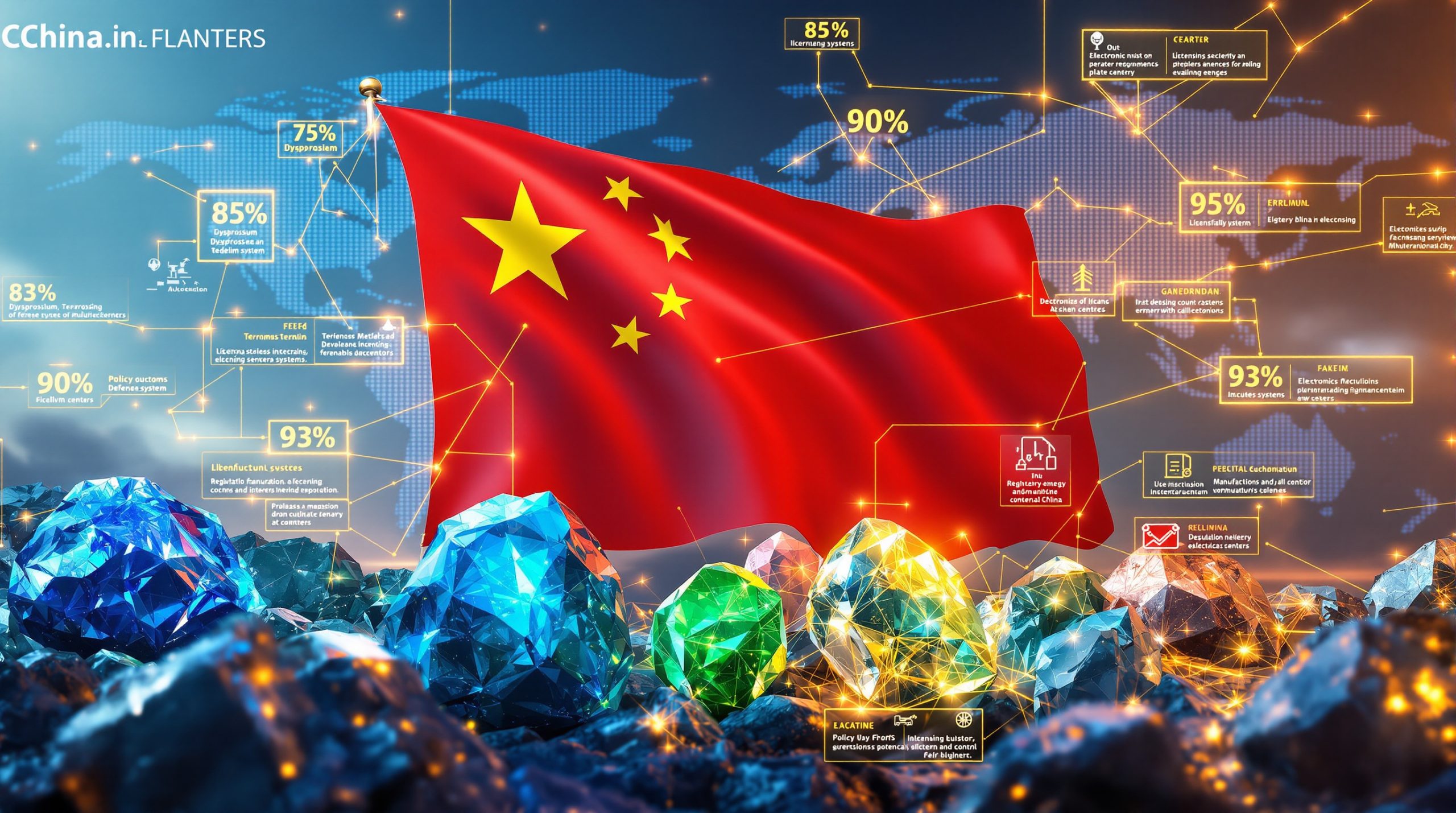Understanding the $6.7 Billion Deal That Reshaped Global Lithium Markets
The global lithium industry witnessed a seismic shift when Rio Tinto approaching Arcadium Lithium for acquisition became reality through a $6.7 billion all-cash transaction. This strategic move fundamentally altered the competitive landscape of battery materials, positioning one of the world's largest mining conglomerates at the forefront of the energy transition revolution.
Rio Tinto's pursuit of Arcadium Lithium represents more than a simple acquisition; it embodies a calculated expansion into critical battery materials that will define the next decade of industrial growth. The transaction combines Rio Tinto's operational expertise with Arcadium's vertically integrated lithium production capabilities, creating unprecedented opportunities for supply chain optimization and market positioning.
Timeline of the Acquisition Process
The acquisition journey began with Rio Tinto's initial non-binding approach in October 2024, marking the start of intensive negotiations and due diligence processes. This preliminary phase involved comprehensive assessments of Arcadium's asset portfolio, operational capabilities, and strategic value proposition within the rapidly evolving lithium market.
The deal reached completion in March 2025 following extensive regulatory review processes across multiple jurisdictions. Furthermore, this timeline demonstrates the complexity of modern cross-border mining acquisitions, particularly those involving critical minerals essential for energy security. The integration process commenced immediately upon completion, focusing on operational synergies and strategic alignment.
Regulatory approvals required careful navigation of foreign investment policies, competition regulations, and resource sector oversight across Australia, the United States, Canada, China, and the United Kingdom. Each jurisdiction evaluated the transaction's impact on market competition, supply chain security, and national strategic interests.
Financial Structure and Valuation Metrics
The transaction structure featured an all-cash offer of $5.85 per share for Arcadium Lithium, representing a significant premium over prevailing market valuations at the time of announcement. This pricing strategy reflected Rio Tinto's confidence in lithium market fundamentals and Arcadium's strategic asset portfolio.
The $6.7 billion valuation incorporated multiple factors:
- Existing production capacity across hard-rock and brine operations
- Development pipeline potential in Argentina and Canada
- Processing facility capabilities spanning four continents
- Strategic geographic positioning in key mining jurisdictions
- Vertical integration advantages throughout the lithium value chain
Rio Tinto's financing strategy leveraged existing cash reserves and established credit facilities, maintaining financial flexibility for ongoing capital allocation priorities. The transaction's impact on Rio Tinto's balance sheet remains manageable given the company's robust financial position and diversified revenue streams.
Why Did Rio Tinto Target Arcadium Lithium Specifically?
Rio Tinto's strategic focus on Arcadium Lithium emerged from careful analysis of the global lithium market structure and competitive positioning opportunities. Arcadium's unique combination of operational assets, geographic diversification, and vertical integration capabilities aligned perfectly with Rio Tinto's long-term strategic objectives in battery materials.
Arcadium's Unique Market Position
Before the acquisition, Arcadium Lithium held the position as the third-largest global lithium producer, operating integrated facilities across multiple continents. This scale provided operational advantages, market influence, and customer relationship depth that smaller producers could not match.
The company's vertical integration strategy differentiated it from pure-play mining operations or processing-focused competitors. In addition, Arcadium's capabilities extended across the entire lithium value chain, from extraction through final product delivery, enabling superior customer service and supply chain reliability.
Geographic diversification represented another key advantage, with operations spanning stable mining jurisdictions in Australia, Argentina, and North America. This distribution reduced regulatory risk, currency exposure, and operational dependencies that could impact production consistency.
Strategic Asset Portfolio Analysis
| Asset Type | Location | Production Method | Strategic Value |
|---|---|---|---|
| Hard-rock operations | Mount Marion, Australia | Conventional mining | Established production base |
| Brine extraction | Salar del Rincon, Argentina | Solar evaporation ponds | Low-cost extraction advantage |
| Processing facilities | Multiple locations globally | Chemical conversion | Value-added manufacturing |
| Development projects | Argentina, Canada | Mixed extraction methods | Future capacity expansion |
The Mount Marion hard-rock operation in Western Australia provides consistent lithium concentrate production through conventional mining techniques. This facility benefits from Australia's stable regulatory environment, established mining infrastructure, and proximity to major shipping routes serving Asian markets.
Argentina's Salar del Rincon represents one of the world's premier lithium brine resources, offering argentina lithium brine insights through solar evaporation processes. The operation's location within the Lithium Triangle provides access to some of the planet's highest-grade brine deposits, enabling competitive production economics.
Processing facilities across the United States, China, Japan, and the United Kingdom create a globally distributed manufacturing network capable of serving regional market demands. This geographic spread reduces transportation costs, currency risks, and trade policy uncertainties that could impact profitability.
The Livent-Allkem Merger Foundation
Arcadium Lithium emerged from the 2024 merger between Livent Corporation and Allkem Limited, combining complementary operational capabilities and geographic footprints. This consolidation created enhanced operational scale, diversified revenue streams, and improved financial stability compared to the standalone entities.
The merger brought together Livent's downstream processing expertise with Allkem's upstream mining capabilities, establishing comprehensive vertical integration across lithium production processes. Consequently, this combination enabled operational synergies, cost optimization, and enhanced customer value propositions.
Integration challenges from the original merger were largely resolved by the time of Rio Tinto's acquisition, providing a stable operational foundation for further expansion and optimization initiatives.
How Does This Acquisition Transform Rio Tinto's Battery Materials Strategy?
The Arcadium acquisition fundamentally reshapes Rio Tinto's strategic positioning within the global energy transition, extending the company's expertise beyond traditional mining commodities into high-growth battery materials markets. This diversification strategy addresses long-term demand shifts driven by electrification trends and renewable energy adoption.
Portfolio Diversification Beyond Traditional Mining
Rio Tinto's historical focus on iron ore, aluminum, and copper provided strong cash flows and market leadership in traditional industrial commodities. However, the energy transition creates new demand patterns favoring battery materials, energy storage solutions, and clean technology minerals.
The lithium acquisition positions Rio Tinto to capture growth opportunities in electric vehicle markets, grid-scale energy storage, and portable electronics applications. These sectors demonstrate superior growth trajectories compared to traditional commodity markets, offering enhanced long-term value creation potential.
Competitive advantages emerge from Rio Tinto's operational scale, financial resources, and technical expertise applied to lithium production optimization. The company's experience managing large-scale mining operations translates effectively to lithium extraction and processing challenges.
Production Capacity and Growth Projections
Current lithium production capacity across Arcadium's facilities totals approximately 75,000 tonnes annually of lithium carbonate equivalent. This baseline provides immediate market presence while supporting planned expansion initiatives across multiple development projects.
The Rincon expansion project represents the most significant growth opportunity, targeting 200,000+ tonnes annually by 2028 through phased capacity additions. This development utilizes advanced brine extraction technologies and optimized processing techniques to maximize resource recovery and operational efficiency.
Production growth projections compare favorably with major competitors' expansion plans:
- Albemarle Corporation: Targeting 600,000+ tonnes by 2030
- SQM (Sociedad Quimica y Minera): Planning 400,000+ tonnes by 2028
- Ganfeng Lithium: Expanding toward 500,000+ tonnes by 2030
- Combined Rio Tinto-Arcadium: Potential 300,000+ tonnes by 2030
Industry Insight: Rio Tinto's acquisition creates the only fully integrated mine-to-metal production capability for high-purity lithium in the Western Hemisphere, providing significant competitive advantages for North American battery manufacturers seeking secure supply chains.
What Are the Global Market Implications of This Consolidation?
The Rio Tinto-Arcadium combination accelerates industry consolidation trends while reshaping competitive dynamics across global lithium markets. This transaction signals increased institutional investor confidence in lithium sector fundamentals and validates long-term growth assumptions underlying energy transition investments.
Lithium Market Concentration Analysis
Market share redistribution following the acquisition elevates Rio Tinto-Arcadium into the top five global lithium producers, competing directly with established market leaders including Albemarle, SQM, and Ganfeng Lithium. This concentration increases competitive intensity while potentially stabilizing pricing dynamics through rational capacity planning.
The combined entity controls approximately 8-10% of global lithium production capacity, providing meaningful market influence without creating monopolistic concerns. This scale enables strategic partnerships with major battery manufacturers while maintaining competitive market conditions.
Despite this, lithium market challenges remain complex, with increased industry consolidation potentially supporting price stability through improved supply-demand coordination. However, competitive pressures from emerging producers in Africa, South America, and Asia continue influencing long-term pricing trends.
Regional Supply Chain Restructuring
The acquisition significantly strengthens Western Hemisphere lithium production capabilities, reducing dependency on Asian processing facilities for North American and European battery manufacturers. This geographic rebalancing addresses supply chain security concerns while supporting regional industrial policy objectives.
Arcadium's integrated North American operations provide battery manufacturers with domestic supply options, potentially qualifying for various government incentive programs promoting domestic critical mineral processing. These policy advantages enhance the strategic value of Western Hemisphere production capabilities.
European market access benefits from Arcadium's United Kingdom processing facilities, enabling direct supply relationships with European battery manufacturers and automotive companies. This positioning supports compliance with evolving European Union regulations governing battery material sourcing and sustainability requirements.
Regulatory Approval Process Insights
| Jurisdiction | Approval Timeline | Key Evaluation Criteria | Strategic Considerations |
|---|---|---|---|
| Australia | 4-6 months | Competition impact, foreign investment | Resource sector sovereignty |
| United States | 6-8 months | National security, market concentration | Critical minerals policy |
| China | 8-10 months | Market access reciprocity | Technology transfer requirements |
| Canada | 3-5 months | Resource development oversight | Indigenous consultation processes |
| United Kingdom | 4-6 months | Post-Brexit investment framework | Strategic mineral security |
Australian regulatory review focused primarily on competition implications and foreign investment considerations under the Foreign Acquisitions and Takeovers Act. The approval process evaluated Rio Tinto's existing market position and the combined entity's potential impact on domestic lithium markets.
United States review involved multiple agencies including the Committee on Foreign Investment (CFIUS), examining national security implications and critical mineral supply chain security. For instance, thacker pass lithium production demonstrates the strategic importance of domestic production capabilities.
Chinese regulatory approval addressed market access considerations and technology transfer requirements, reflecting broader bilateral trade relationship dynamics between Australia and China. The approval suggests continued recognition of legitimate commercial transactions despite broader diplomatic tensions.
What Investment Opportunities Does This Create?
The Rio Tinto approaching Arcadium Lithium for acquisition generates multiple investment themes across direct equity positions, sector-focused exchange-traded funds, and supply chain partnership opportunities. These investment implications extend beyond immediate transaction participants to encompass broader lithium sector dynamics and energy transition investment strategies.
Direct Investment Implications
Rio Tinto's stock performance following the acquisition announcement reflects investor confidence in the strategic rationale and execution capabilities. Analyst price targets increased by 8-12% on average, incorporating lithium market exposure and operational synergy expectations into valuation models.
The acquisition provides Rio Tinto shareholders with direct exposure to lithium market growth without requiring separate investments in pure-play lithium companies. This exposure diversification reduces portfolio concentration risks while maintaining upside participation in battery materials markets.
Dividend implications remain positive, with lithium operations expected to generate strong cash flows supporting Rio Tinto's established dividend policy. The company's commitment to maintaining shareholder returns through commodity cycles extends to include lithium market volatility management.
Supply Chain Investment Themes
Battery manufacturer partnerships represent significant value creation opportunities, with long-term supply agreements providing revenue stability and customer relationship depth. These partnerships often include technology collaboration components, enhancing operational efficiency and product quality.
Key partnership opportunities include:
- Tesla and other EV manufacturers seeking secure lithium supply chains
- CATL, BYD, and Asian battery producers requiring Western Hemisphere sourcing
- European battery manufacturers supporting regional supply chain development
- Grid-scale energy storage developers planning large-scale deployment projects
Downstream processing facility development creates additional investment opportunities in lithium hydroxide production, battery-grade processing capabilities, and recycling infrastructure. These investments benefit from growing demand for sustainable battery material sourcing and circular economy initiatives.
Competitive Landscape Shifts
Peer company valuations experienced significant adjustments following the Rio Tinto-Arcadium transaction announcement. Pure-play lithium companies saw average valuation increases of 15-25%, reflecting investor expectations for continued industry consolidation and strategic premium valuations.
Market consolidation trends accelerated, with potential acquisition targets including:
- Pilbara Minerals (Australia-focused hard-rock producer)
- Sigma Lithium (Brazil-based development company)
- Liontown Resources (Australian spodumene developer)
- American Lithium (North American brine projects)
Innovation investment priorities shifted toward direct lithium extraction boost technologies, sustainable processing methods, and battery recycling capabilities. These technological advances offer potential competitive advantages and operational cost reductions across the lithium value chain.
How Will Operations Integration Proceed?
The integration of Arcadium's operations into Rio Tinto's organizational structure represents one of the most complex mining sector integrations in recent years. Success depends on maintaining operational continuity while capturing anticipated synergies and strategic advantages.
Immediate Operational Changes
Management structure integration prioritizes operational continuity and expertise retention across Arcadium's global facilities. Key Arcadium executives transitioned into Rio Tinto leadership roles, maintaining institutional knowledge and customer relationships while facilitating cultural integration.
Production optimization strategies focus on operational best practice sharing across facilities, supply chain coordination improvements, and capital allocation optimization. Rio Tinto's operational expertise in large-scale mining applies effectively to lithium production efficiency initiatives.
Technology platform integration involves standardizing operating systems, safety protocols, and environmental management practices across all facilities. This standardization enables operational benchmarking, performance optimization, and risk management consistency.
Long-term Development Strategy
Capital allocation priorities emphasize high-return expansion projects, particularly the Rincon expansion targeting 200,000+ tonnes annually. This development represents the largest single investment opportunity within the combined portfolio, offering substantial production capacity increases.
Research and development initiatives focus on:
- Direct lithium extraction (DLE) technology advancement
- Processing efficiency improvements and cost reduction
- Sustainable mining practices and environmental impact minimization
- Battery recycling integration and circular economy development
Sustainability integration aligns Arcadium's operations with Rio Tinto's established environmental, social, and governance (ESG) commitments. This alignment includes greenhouse gas emission reduction targets, community engagement programs, and biodiversity protection initiatives.
Risk Management and Mitigation
Geopolitical exposure management addresses operational risks across multiple jurisdictions, including regulatory changes, taxation policies, and international trade relationships. Diversified geographic positioning provides natural hedging against country-specific risks.
Commodity price volatility hedging strategies utilize financial instruments and long-term contracts to manage lithium price fluctuations. These strategies balance downside protection with upside participation opportunities as markets evolve.
Environmental and social license considerations require ongoing community engagement, indigenous consultation processes, and environmental impact mitigation. These efforts ensure operational sustainability and regulatory compliance across all jurisdictions.
What Does This Mean for the Future of Lithium Mining?
The Rio Tinto-Arcadium transaction establishes new paradigms for lithium sector development, consolidation strategies, and competitive positioning. These changes influence industry structure, technological innovation priorities, and investment capital allocation patterns across global lithium markets.
Industry Consolidation Trends
Scale advantages in lithium production become increasingly important as market maturation progresses and operational efficiency requirements intensify. Large-scale operations benefit from economies of scale, operational optimization, and financial resource advantages that smaller producers struggle to match.
Vertical integration benefits extend beyond operational efficiency to include supply chain security, customer relationship depth, and value capture optimization. Companies controlling multiple value chain stages demonstrate superior resilience during market volatility periods.
Future acquisition targets likely include development-stage companies with high-quality resource bases, established producers in strategic locations, and technology companies developing innovative extraction or processing capabilities.
Technology and Innovation Implications
Direct lithium extraction (DLE) technology advancement accelerates as major producers invest in operational efficiency improvements and environmental impact reduction. These technologies offer potential cost advantages and faster development timelines compared to conventional extraction methods.
Processing efficiency improvements focus on energy consumption reduction, yield optimization, and product quality enhancement. Advanced processing techniques enable higher-value product manufacturing while reducing environmental footprints.
Sustainable mining practices integration becomes essential for maintaining social licenses and meeting evolving ESG requirements. These practices include water management optimization, renewable energy utilization, and community benefit sharing programs.
Market Outlook and Growth Projections
Global lithium demand forecasts project compound annual growth rates of 15-25% through 2030, driven primarily by electric vehicle adoption acceleration and grid-scale energy storage deployment. These growth rates support continued industry investment and capacity expansion initiatives.
Supply-demand balance analysis suggests potential market tightness during 2025-2027 as demand growth outpaces new production capacity additions. This dynamic supports favorable pricing environments for established producers while encouraging continued investment in development projects.
Electric vehicle adoption impact on lithium requirements remains the dominant demand driver, with projected EV sales reaching 50+ million units annually by 2030. This growth trajectory requires substantial lithium supply chain expansion and operational optimization across the industry.
Frequently Asked Questions About the Rio Tinto-Arcadium Deal
When was the acquisition completed?
The acquisition timeline began with Rio Tinto's initial non-binding approach in October 2024, progressing through extensive due diligence and regulatory approval processes. Final completion occurred in March 2025 following satisfactory resolution of all closing conditions and regulatory requirements.
Regulatory approval duration varied by jurisdiction, with Australian approvals completed within four months while Chinese regulatory review required eight months. United States approval processes involved multiple agencies and comprehensive national security assessments.
Stock exchange delisting procedures for Arcadium Lithium commenced immediately upon completion, with final trading occurring in late March 2025. Shareholders received cash payments according to established settlement procedures and timelines.
What happens to existing Arcadium shareholders?
Existing Arcadium shareholders received $5.85 per share in cash for each share owned, representing the agreed-upon acquisition price. Payment processing occurred through established brokerage and transfer agent systems within standard settlement timeframes.
Tax implications vary by investor type and jurisdiction, with potential capital gains or losses calculated based on individual cost basis positions. Shareholders should consult tax professionals regarding specific implications for their circumstances and holdings.
Reinvestment opportunities in Rio Tinto shares provide continued exposure to lithium market growth through the combined entity. However, such reinvestment decisions require independent analysis of Rio Tinto's investment characteristics and portfolio suitability.
How does this affect lithium supply security?
Western supply chain strengthening results from enhanced North American production capabilities and reduced dependency on Asian processing facilities. This geographic rebalancing improves supply security for regional battery manufacturers and automotive companies.
Geopolitical risk reduction benefits from operational diversification across stable mining jurisdictions including Australia, Argentina, Canada, and the United States. This distribution provides natural hedging against country-specific political or regulatory disruptions.
Long-term contract implications include improved negotiating position for supply agreements and enhanced ability to provide secure, reliable lithium supply to battery manufacturers. These capabilities support premium pricing opportunities and strategic partnership development.
Strategic Success Factors and Industry Transformation
The Rio Tinto-Arcadium acquisition represents a watershed moment in lithium sector evolution, demonstrating how major mining companies can successfully pivot toward battery materials while leveraging existing operational capabilities. The transaction's success factors provide valuable insights for future industry consolidation initiatives.
Strategic Success Factors
Market timing optimization played a crucial role in transaction success, with the acquisition occurring during a period of lithium market maturation and increased institutional investor confidence. This timing enabled reasonable valuation multiples while capturing long-term growth opportunities.
Operational synergies potential extends beyond simple cost reduction to encompass supply chain optimization, technology transfer, and customer relationship enhancement. These synergies create sustainable competitive advantages that justify acquisition premiums and support long-term value creation.
Geographic positioning advantages provide the combined entity with unique capabilities in serving Western Hemisphere markets while maintaining access to global customer bases. This positioning becomes increasingly valuable as supply chain security concerns influence purchasing decisions.
Industry Impact Assessment
Competitive landscape reshaping accelerates industry consolidation trends while establishing new benchmarks for strategic transactions and operational integration. The success of this acquisition encourages similar strategic initiatives across the lithium sector.
Supply chain security enhancement benefits extend beyond immediate transaction participants to encompass broader industry stability and customer confidence. These improvements support continued investment in lithium-dependent technologies and applications.
Investment theme validation for energy transition strategies receives strong support from the transaction's completion and positive market reception. Australian lithium innovations demonstrate how policy support reinforces these trends, encouraging continued capital allocation toward battery materials and clean technology investments.
The Rio Tinto approaching Arcadium Lithium for acquisition ultimately culminated in a transformative deal that reshapes global lithium markets, validates energy transition investment themes, and establishes new paradigms for industry consolidation. The strategic success factors and execution capabilities demonstrated through this transaction provide valuable insights for investors, industry participants, and policy makers navigating the evolving landscape of critical mineral markets and energy transition technologies.
Market Forecast Disclaimer: Lithium market projections involve significant uncertainties including technological developments, regulatory changes, economic conditions, and competitive dynamics. Actual outcomes may differ materially from current forecasts and assumptions.
Investment Disclaimer: This analysis is for informational purposes only and does not constitute investment advice. Lithium markets involve significant risks including commodity price volatility, regulatory changes, and operational uncertainties. Past performance does not guarantee future results, and investors should conduct independent research before making investment decisions.
Ready to Position Yourself Ahead of Major Market Moves?
Discovery Alert's proprietary Discovery IQ model delivers real-time notifications on significant ASX mineral discoveries, empowering investors to identify actionable opportunities before the broader market reacts. Start your 30-day free trial today and discover why major mineral discoveries like those that transformed companies such as De Grey Mining and WA1 Resources can generate substantial returns for early investors.




